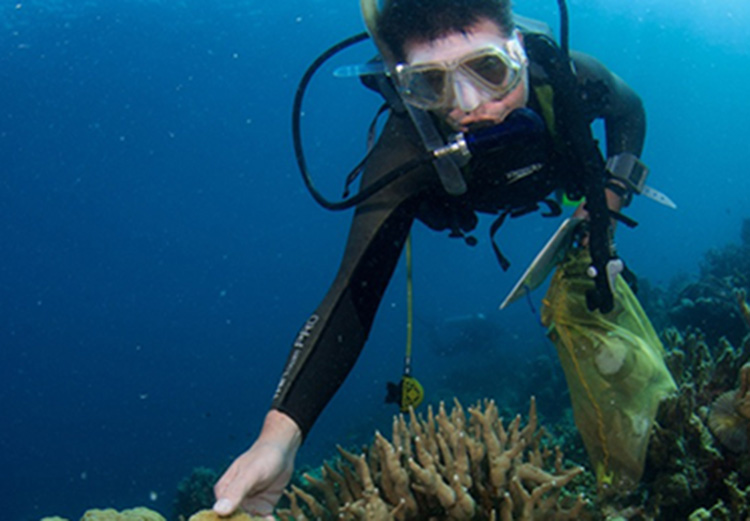Coral Fauna of Saba Bank
Thursday 29 October 2015, The original aim of the coral diversity survey was (1) to find out whether the coral fauna of Saba Bank matches the coral fauna of St Eustatius and (2) to check whether the Saba Bank coral fauna has remained the same over nearly half a century by a comparison with results of an earlier marine biodiversity expedition to Saba Bank, which was organized in 1971 by the Dutch Navy and Naturalis.
Due to weather conditions and other circumstances, only three dives were made on Saba Bank, all at a single locality, which is not enough for the planned comparisons. A total of 18 stony coral species was recorded (15-17 per dive). Some of the encountered coral species showed morphological variation by being either attached or free-living. The latter are so-called coralliths or living rolling stones. However, coralliths belonging to the genus Madracis were not ball-shaped as regular coralliths but disk-shaped, similar to many species of mushroom corals in the Indo-Pacific. This particular coral shape may be related to swell-generated currents that push free-living coral fragments over the shallow sea floor.
Because diving at Saba Bank had to be aborted, the survey was continued at Ladder Bay, Saba, where nine dives were made. Here a total of 42 species was encountered (26-37 per dive), which is a very high number for a single locality in the Caribbean. One of these species is Tubastraea coccinea, a non-indigenous species from the Indo-Pacific. This species may have been introduced as fouling organism on an oil rig and was first reported from Curaçao in 1943. It is known as an aggressive invasive species in Brazil, where it competes for space with local, endemic coral species.
Some stony corals were observed as host for the Christmas tree worm (Spirobranchus giganteus). Various host coral species were previously not known as associate for this tube worm, which is probably a generalist with regard to its host preference. However, many coral species have never been reported as its habitat.
EXPEDITION SABA BANK II
OCT - NOV 2015

BERT HOEKSEMA
NATURALIS BIODIVERSITY CENTER

